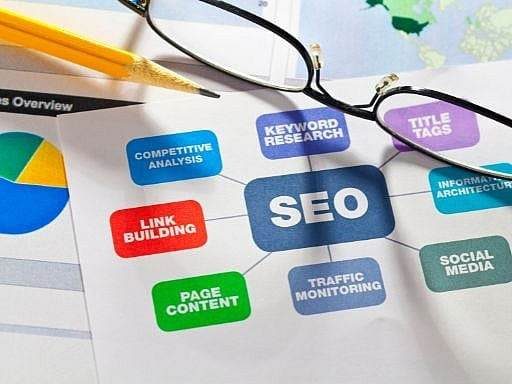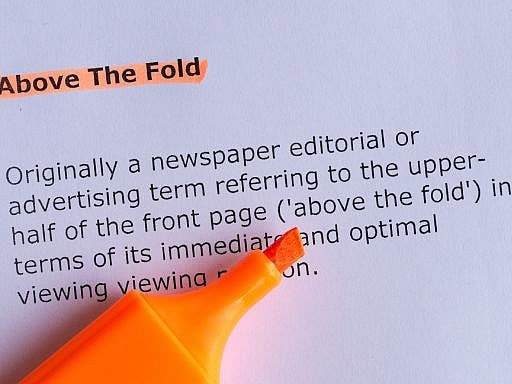Main Links

Last Updated October 24, 2024
 A landing page is an essential part of any successful online marketing campaign. It's a web page designed for a visitor to take a specific action, such as signing up for a newsletter, downloading a free ebook, or purchasing a product. Landing pages are commonly used to capture leads and generate sales.
They can also be used to educate customers and increase brand awareness. Landing pages are an effective way to get your message across, as they allow you to tailor the content of the page to fit the needs of your target audience.
They also provide an opportunity for you to craft a compelling call-to-action that will encourage visitors to take action. Creating an effective landing page requires careful planning and attention to detail, as the layout and design must be optimized for maximum conversion rate.
Additionally, you'll need to ensure that your page is optimized for both mobile and desktop devices. By understanding the basics of what makes a successful landing page, you can create one that will help you reach your goals and increase conversions.
A landing page is an essential part of any successful online marketing campaign. It's a web page designed for a visitor to take a specific action, such as signing up for a newsletter, downloading a free ebook, or purchasing a product. Landing pages are commonly used to capture leads and generate sales.
They can also be used to educate customers and increase brand awareness. Landing pages are an effective way to get your message across, as they allow you to tailor the content of the page to fit the needs of your target audience.
They also provide an opportunity for you to craft a compelling call-to-action that will encourage visitors to take action. Creating an effective landing page requires careful planning and attention to detail, as the layout and design must be optimized for maximum conversion rate.
Additionally, you'll need to ensure that your page is optimized for both mobile and desktop devices. By understanding the basics of what makes a successful landing page, you can create one that will help you reach your goals and increase conversions.
 If you want to make the most of your online presence, you have to start by understanding your traffic sources. Knowing where your visitors are coming from and how they are interacting with your website is essential for any successful business.
Analyzing your traffic sources can give you valuable insights into who is visiting your website, what they’re looking for, and how you can use this information to enhance your website. You can track your website traffic using a number of tools, including Google Analytics, SEMrush, and Alexa.
These tools provide detailed statistics regarding the sources of your visitors, including what country they’re from, what type of device they’re using, and what pages they’re viewing. Once you have a better understanding of who is visiting your site, you can use this information to tailor your content and optimize for the best possible user experience.
Additionally, you can assess the effectiveness of any campaigns or strategies you may be running in order to maximize their success. Understanding your traffic sources is a great way to get started with making the most of your website and ensuring that it’s reaching the right people.
Having this information can help you to better understand your visitors and assess the effectiveness of any campaigns or strategies you may be running.
By understanding your traffic sources, you can make the most of your website and ensure that it is reaching the right people.
Additionally, you can use this information to improve your content and make more informed decisions about marketing and advertising campaigns. Tracking your website traffic is a great way to gain valuable insights into your visitors and make the most of your online presence.
If you want to make the most of your online presence, you have to start by understanding your traffic sources. Knowing where your visitors are coming from and how they are interacting with your website is essential for any successful business.
Analyzing your traffic sources can give you valuable insights into who is visiting your website, what they’re looking for, and how you can use this information to enhance your website. You can track your website traffic using a number of tools, including Google Analytics, SEMrush, and Alexa.
These tools provide detailed statistics regarding the sources of your visitors, including what country they’re from, what type of device they’re using, and what pages they’re viewing. Once you have a better understanding of who is visiting your site, you can use this information to tailor your content and optimize for the best possible user experience.
Additionally, you can assess the effectiveness of any campaigns or strategies you may be running in order to maximize their success. Understanding your traffic sources is a great way to get started with making the most of your website and ensuring that it’s reaching the right people.
Having this information can help you to better understand your visitors and assess the effectiveness of any campaigns or strategies you may be running.
By understanding your traffic sources, you can make the most of your website and ensure that it is reaching the right people.
Additionally, you can use this information to improve your content and make more informed decisions about marketing and advertising campaigns. Tracking your website traffic is a great way to gain valuable insights into your visitors and make the most of your online presence.
 Are you wondering what 'above the fold' means? It's a term used to describe the portion of a web page that is visible without having to scroll. Crucial information should always be shown above the fold, as this is the first impression visitors will have of your website.
If they don't see what they're looking for there, they may never scroll down to view the rest of your page. That's why it's so important to make sure all important information is placed in this most visible area.
When deciding what to put above the fold, consider the goal of your website. If you're trying to attract more customers, make sure contact information is clearly visible. If you're trying to sell a product, include a link to your store or product page.
You should also include a description of the company, a brief overview of services, and any other important info that will give visitors an idea of who you are and what you do. Finally, don't forget to include links or buttons that will encourage visitors to keep scrolling and exploring the rest of your website.
Remember that what people see first will leave a lasting impression, so it's worth taking the time to make sure all crucial information is shown above the fold! When designing a website, it’s important to keep the user experience in mind.
It’s crucial to make sure all the necessary information is visible above the fold, so users can quickly get what they need. This includes things like contact information, company logos, product descriptions, and any other important information.
It’s also important to keep the design simple and uncluttered. Too much clutter can be overwhelming and make it difficult for users to find what they’re looking for. Having a clear hierarchy of information is important—put the most important information at the top of the page, then secondary information further down the page.
It’s also a good idea to leave some whitespace around elements to help draw attention to them and make the page look more organized and visually appealing. If you have too much information on the page, it can be overwhelming and make it difficult for users to find what they need. confidence in your website.
Finally, think about what actions you want users to take on your website. If you want them to buy a product, make sure the “Buy Now” button is above the fold. If you want them to sign up for a newsletter, make sure the “Sign Up” button is above the fold. This will help ensure that users can quickly find what they need and take the desired action.
Are you wondering what 'above the fold' means? It's a term used to describe the portion of a web page that is visible without having to scroll. Crucial information should always be shown above the fold, as this is the first impression visitors will have of your website.
If they don't see what they're looking for there, they may never scroll down to view the rest of your page. That's why it's so important to make sure all important information is placed in this most visible area.
When deciding what to put above the fold, consider the goal of your website. If you're trying to attract more customers, make sure contact information is clearly visible. If you're trying to sell a product, include a link to your store or product page.
You should also include a description of the company, a brief overview of services, and any other important info that will give visitors an idea of who you are and what you do. Finally, don't forget to include links or buttons that will encourage visitors to keep scrolling and exploring the rest of your website.
Remember that what people see first will leave a lasting impression, so it's worth taking the time to make sure all crucial information is shown above the fold! When designing a website, it’s important to keep the user experience in mind.
It’s crucial to make sure all the necessary information is visible above the fold, so users can quickly get what they need. This includes things like contact information, company logos, product descriptions, and any other important information.
It’s also important to keep the design simple and uncluttered. Too much clutter can be overwhelming and make it difficult for users to find what they’re looking for. Having a clear hierarchy of information is important—put the most important information at the top of the page, then secondary information further down the page.
It’s also a good idea to leave some whitespace around elements to help draw attention to them and make the page look more organized and visually appealing. If you have too much information on the page, it can be overwhelming and make it difficult for users to find what they need. confidence in your website.
Finally, think about what actions you want users to take on your website. If you want them to buy a product, make sure the “Buy Now” button is above the fold. If you want them to sign up for a newsletter, make sure the “Sign Up” button is above the fold. This will help ensure that users can quickly find what they need and take the desired action.
 When it comes to your website's calls to action (CTAs), clarity is key. An effective CTA should be explicit, and direct, and leave no room for confusion. Your visitors should know exactly what you want them to do after reading your message.
If you're asking them to fill out a form or click a button, make sure your CTA is clear and visible. Use action words that create urgency and compel your visitors to take the next step.
For example, instead of saying "submit," try "get started now" or "start my free trial." Keep your CTA brief and to the point and make sure it stands out from the rest of your content.
If you want to increase the effectiveness of your CTAs, consider A/B testing different versions of your message to see which resonates with your target audience. With explicit and clear calls to action, you will be able to engage more customers and grow your business.
You want your visitors to know exactly what to do after reading your message. Use action words that create urgency and compel your visitors to take the next step. Try to keep your CTA brief and to the point.
Explicit and clear CTAs are essential for engaging more customers and growing your business. By creating CTAs that are direct and visible, you give your visitors the information they need to make a decision and take the next step.
With the right CTAs, you can guide visitors through the process of becoming customers, and keep them engaged with your business.
When it comes to your website's calls to action (CTAs), clarity is key. An effective CTA should be explicit, and direct, and leave no room for confusion. Your visitors should know exactly what you want them to do after reading your message.
If you're asking them to fill out a form or click a button, make sure your CTA is clear and visible. Use action words that create urgency and compel your visitors to take the next step.
For example, instead of saying "submit," try "get started now" or "start my free trial." Keep your CTA brief and to the point and make sure it stands out from the rest of your content.
If you want to increase the effectiveness of your CTAs, consider A/B testing different versions of your message to see which resonates with your target audience. With explicit and clear calls to action, you will be able to engage more customers and grow your business.
You want your visitors to know exactly what to do after reading your message. Use action words that create urgency and compel your visitors to take the next step. Try to keep your CTA brief and to the point.
Explicit and clear CTAs are essential for engaging more customers and growing your business. By creating CTAs that are direct and visible, you give your visitors the information they need to make a decision and take the next step.
With the right CTAs, you can guide visitors through the process of becoming customers, and keep them engaged with your business.
 We all know the saying that a picture is worth a thousand words. With the age of digital media, we now have access to more visual media than ever before. Whether it be a simple photo or an intricate video, there's no doubt that visuals can be powerful tools for conveying ideas and emotions.
If you want to make sure your message is heard loud and clear, then why not enlist the help of your friend – visual media? Pictures and videos can be used to amplify your point of view and make sure it reaches the right people.
They can also add life and vibrancy to any project you're working on. So, don't be afraid to experiment with visuals to see what works best for your particular message. Your friend visual media can take your message to the next level!
Visual media can come in many forms, including photographs, illustrations, videos, and computer-generated images. With the right visuals, you can make your message stand out and attract the attention of your target audience.
For example, a striking photo can capture people’s attention and draw them in right away. Videos can be used to demonstrate a product or service in an engaging way. Illustrations can help to explain complex topics in a simple and relatable manner.
And computer-generated images can be used to create captivating 3D animations and visuals. No matter what type of visuals you choose, it’s important to ensure that they are of high quality and accurately reflect your message.
Poor-quality visuals can easily turn away potential customers and make your message seem unprofessional. That’s why it’s important to invest in quality visuals and put in the effort to make sure that they are well-crafted and represent your message in the best possible light.
If you want to make sure that your message is heard loud and clear, then don’t be afraid to enlist the help of visual media. With the right visuals, you can make sure your message is seen and understood by the right people.
We all know the saying that a picture is worth a thousand words. With the age of digital media, we now have access to more visual media than ever before. Whether it be a simple photo or an intricate video, there's no doubt that visuals can be powerful tools for conveying ideas and emotions.
If you want to make sure your message is heard loud and clear, then why not enlist the help of your friend – visual media? Pictures and videos can be used to amplify your point of view and make sure it reaches the right people.
They can also add life and vibrancy to any project you're working on. So, don't be afraid to experiment with visuals to see what works best for your particular message. Your friend visual media can take your message to the next level!
Visual media can come in many forms, including photographs, illustrations, videos, and computer-generated images. With the right visuals, you can make your message stand out and attract the attention of your target audience.
For example, a striking photo can capture people’s attention and draw them in right away. Videos can be used to demonstrate a product or service in an engaging way. Illustrations can help to explain complex topics in a simple and relatable manner.
And computer-generated images can be used to create captivating 3D animations and visuals. No matter what type of visuals you choose, it’s important to ensure that they are of high quality and accurately reflect your message.
Poor-quality visuals can easily turn away potential customers and make your message seem unprofessional. That’s why it’s important to invest in quality visuals and put in the effort to make sure that they are well-crafted and represent your message in the best possible light.
If you want to make sure that your message is heard loud and clear, then don’t be afraid to enlist the help of visual media. With the right visuals, you can make sure your message is seen and understood by the right people.